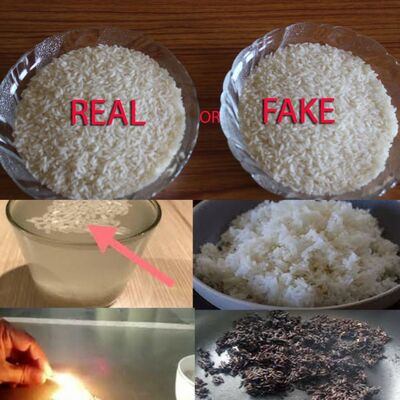ADVERTISEMENT
In recent times, there has been increasing worry about the presence of synthetic or “plastic” rice in markets worldwide. This counterfeit rice, made from synthetic materials, can pose significant health risks. As consumers, it is vital for us to know how to differentiate between real rice and its fake counterpart. This article provides practical advice on identifying and verifying the authenticity of the rice we buy.
Understanding Plastic Rice
What is Plastic Rice?
Plastic rice is allegedly produced using synthetic materials like plastic resins and is designed to resemble real rice in appearance. It is said to be made from a mixture of potatoes, sweet potatoes, and synthetic resin or plastic. The main concern is that regular consumption of plastic rice could cause health problems.
Tips for Identifying Real Rice
1. Water Test
Method: Drop a tablespoon of rice into a glass of cold water. Real rice will sink to the bottom, while plastic rice will float since plastic is less dense than water.
Why It Works: This test relies on the density differences between real rice grains and potential plastic materials.
2. Fire Test
Method: Take a few grains of rice and hold them over a flame with a pair of tongs. If the rice burns and smells like burnt hair, it’s real rice. If it smells like burning plastic, it might be fake.
Why It Works: Real rice is made of organic material that will burn, whereas plastic emits a distinct chemical odor when burned.
3. Mold Growth Test
CONTINUE READING NEXT PAGE
ADVERTISEMENT
